Potřebujeme váš souhlas k využití jednotlivých dat, aby se vám mimo jiné mohly ukazovat informace týkající se vašich zájmů. Souhlas udělíte kliknutím na tlačítko „OK“.
ASTM D1149-07(2012)
Standard Test Methods for Rubber Deterioration—Cracking in an Ozone Controlled Environment
Automaticky přeložený název:
Standardní zkušební metody pro gumy zkaženého & ndash; krakování v Ozone kontrolovaném prostředí
NORMA vydána dne 1.5.2012
Informace o normě:
Označení normy: ASTM D1149-07(2012)
Poznámka: NEPLATNÁ
Datum vydání normy: 1.5.2012
Kód zboží: NS-16462
Počet stran: 11
Přibližná hmotnost: 33 g (0.07 liber)
Země: Americká technická norma
Kategorie: Technické normy ASTM
Kategorie - podobné normy:
Anotace textu normy ASTM D1149-07(2012) :
Keywords:
chamber, cracking, deterioration, ozone, rubber, surface, test, Accelerated aging/testing--rubber/related materials, Air-ozone replacement, Atmospheric analysis, Chamber, Cracking--ozone cracking, Deterioration--rubber, Ozone cracking--accelerated, Pressure testing, Rubber (ozone cracking), Temperature tests--rubber, Tensile properties/testing--rubber/related materials, ICS Number Code 83.060 (Rubber)
Doplňující informace
| Significance and Use | ||||||||||||||
|
The significance of these test methods lies in the ability to differentiate between the degrees of ozone resistance under the limited and specified conditions of the accelerated tests. The degree of resistance being judged by the appearance and magnitude of the formation of cracks in the surface of the subject material. In service, rubber materials deteriorate when exposed to ozone. It is imperative to have test methods in which simple, accelerated time/exposure, comparisons of the material’s ability to resist cracking caused by ozone exposure can be empirically evaluated. Such tests can be used for producer/consumer acceptance, referee purposes, research, and development. These methods are not necessarily suited for use in purchase specifications as there may be no correlation with service performance as actual service conditions (outdoor exposure) vary widely due to geographic location and, therefore, may not yield repeatable or reproducible results. |
||||||||||||||
| 1. Scope | ||||||||||||||
|
1.1 These test methods are used to estimate the effect of exposure, under surface tensile strain conditions, either dynamic or static, in an atmosphere containing specified levels of ozone concentration, expressed as partial pressure (refer to Note 1), on vulcanized rubber, rubber compounds, molded or extruded soft rubber, and other specified materials, or as may be determined empirically. The effect of naturally occurring sunlight or light from artificial sources is excluded. 1.2 Previously published ASTM documents Test Method D518 and Test Methods D3395 have been included in these test methods, D1149, in 2007. Please refer to Note 2. 1.2.1 Test Method D518 and Test Methods D3395 have henceforth been withdrawn and superseded by Test Methods D1149. When Test Methods D1149 is cited, or otherwise referenced, a notation shall be included to this effect. Please refer to section 3.2 for the appropriate references. 1.3 The specified conditions of exposure to ozone in the controlled environments are accelerated in comparison to outdoor exposure. These accelerated ozone test methods may not give results which correlate with outdoor exposure tests or service performance. 1.4 All materials, instruments, or equipment used for the determination of mass, force, dimension, ozone concentration, partial pressure, temperature, velocity, and gas exchange rate shall have direct traceability to the National Institute for Standards and Technology, or other internationally recognized organization parallel in nature. 1.5 The values stated in SI units are to be regarded as standard. The values given in parentheses are for information only. Many of the stated SI units are direct conversions from the U.S. Customary System to accommodate the instrumentation, practices, and procedures that existed prior to the Metric Conversion Act of 1975. 1.6 This standard involves hazardous materials, specifically ozone. It may also involve hazardous operations and equipment. This standard does not purport to address all of the safety concerns, if any, associated with its use. It is the responsibility of the user of this standard to establish appropriate safety and health practices and determine the applicability of regulatory limitations prior to use. Note 1—A discussion and explanation regarding the measurement of ozone concentrations based upon parts of ozone per unit of air versus partial pressure is provided in Test Methods D4575, specifically Appendices X1 and X2. Test Methods D4575 is also recommended as a source of background information regarding standards involving materials exposed to ozone. |
||||||||||||||
| 2. Referenced Documents | ||||||||||||||
|
Podobné normy:
Historická
1.7.2014
Historická
1.5.2013
Historická
1.11.2013
Historická
1.5.2012
Historická
1.7.2010
Historická
1.12.2010
Odebírejte informace o nově vydaných normách ZDARMA:
Chcete pravidelně odebírat informace o nově vycházejících normách z celého světa a to zcela zdarma?
Přihlašte se k odběru. Vše je velice jednoduché a absolutně ZDARMA.
Na výběr máte vydavatele z celého světa.


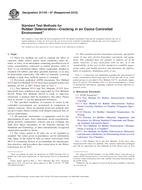
 ASTM D2632-14
ASTM D2632-14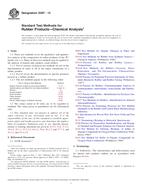 ASTM D297-13
ASTM D297-13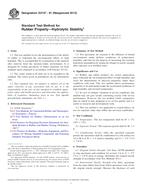 ASTM D3137-81(2013)..
ASTM D3137-81(2013)..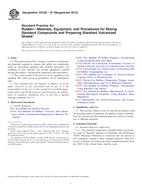 ASTM D3182-07(2012)..
ASTM D3182-07(2012)..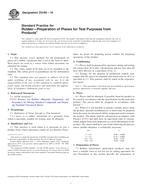 ASTM D3183-10
ASTM D3183-10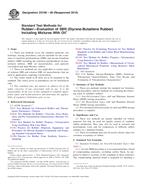 ASTM D3185-06(2010)..
ASTM D3185-06(2010)..
 Cookies
Cookies
